Common Name(s): Eastern redbud, Judas-tree, American redbud
Scientific Name: Cercis canadensis
Distribution: Eastern North America
Tree Size: 30-50 ft (10-15 m) tall,
6-12 in (15-30 cm) trunk diameter
Average Dried Weight: 47.0 lbs/ft3 (755 kg/m3)
Specific Gravity (Basic, 12% MC): .63, .75
Janka Hardness: 1,660 lbf (7,400 N)*
*Estimated hardness based on specific gravity.
Modulus of Rupture: No data available.
Elastic Modulus: No data available.
Crushing Strength: No data available.
Shrinkage: No data available.
Color/Appearance: Heartwood ranges from a golden brown to a darker reddish brown, sometimes with a streaked appearance. Can have a greenish olive cast, especially when freshly sawn. Colors tend to darken and redden over time. Pale white sapwood is clearly demarcated from the heartwood. Burls on the trunk not too uncommon.
Grain/Texture: Medium to fine texture and straight grain. Good natural luster.
Rot Resistance: Rated as very durable. No information on insect or borer resistance.
Workability: Easy to work with both hand and machine tools. Turns, glues, and finishes well.
Odor: No characteristic odor.
Allergies/Toxicity: Besides the standard health risks associated with any type of wood dust, no further health reactions have been associated with eastern redbud—possibly due to its relative obscurity. See the articles Wood Allergies and Toxicity and Wood Dust Safety for more information.
Pricing/Availability: Due to the small size of the tree, eastern redbud is not a commercial species. Since the tree is such a widespread ornamental species, there may be intermittent availability from specialist, urban, or hobbyist-oriented sawyers.
Sustainability: This wood species is not listed in the CITES Appendices, and is reported by the IUCN as being a species of least concern.
Common Uses: Boxes, carvings, turned objects, and small specialty wood items.
Comments: Named for its vivid pinkish-red flowers which bloom in spring, eastern redbud is a popular ornamental tree. Most hobbyist wood occurs as storm-damaged or otherwise felled ornamentals. The wood can be of good quality and visual interest, though since the trees tend to be so small, little commercial potential exists and the wood is seldom seen.
The tree is sometimes known by the name Judas-tree. This is in reference to the related species, Cercis siliquastrum, native to Europe and Asia. According to folklore, this species was the tree that Judas Iscariot used to hang himself after betraying Jesus.
Eastern redbud is also the state tree of Oklahoma.
Images: Drag the slider up/down to toggle between raw and finished wood.
A special thanks to Mike Leigher for providing a wood sample of this wood species.
Identification: See the article on Hardwood Anatomy for definitions of endgrain features.
Porosity: ring porous or semi-ring-porous
Arrangement: earlywood pores in rows of one to three, latewood pores in clusters and/or radial multiples or three to five, also arranged in wavy tangential bands
Vessels: large in earlywood, medium in latewood, sometimes grading down to small; numerous
Parenchyma: vasicentric
Rays: narrow, medium, and wide widths; normal spacing
Lookalikes/Substitutes: Superficially, Russian olive (Elaeagnus angustifolia) is very similar in its facegrain appearance, though the endgrain typically has multi-rowed earlywood pores up to 5-10 pores wide, while redbud usually has earlywood pores only two rows wide.
Anatomically, elms (Ulmus genus) can be very similar to redbud, particularly soft elms that have larger, multi-rowed earlywood pores. However, elms generally have latewood pores that almost immediately transition into pore clusters arranged into consistent tangential bands (ulmiform), while redbud’s latewood pores tend to begin more as radial multiples and more gradually transition into wavy tangential bands, usually accompanied by a gradual reduction in pore size.
Notes: Heartwood fluoresces a streaked green under blacklight.
Another smaller tree/shrub species, Cercis occidentalis, is sometimes called California or western redbud, though some authors treat it only as a variety of C. canadensis. There are a handful of other species, including the European species C. siliquastrum mentioned in the comments above, though none of them are considered commercial species.
Related Content:

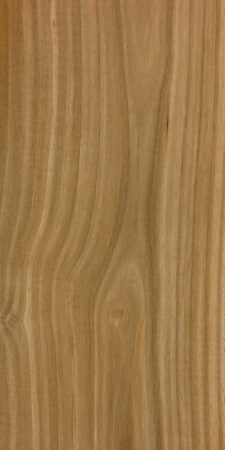
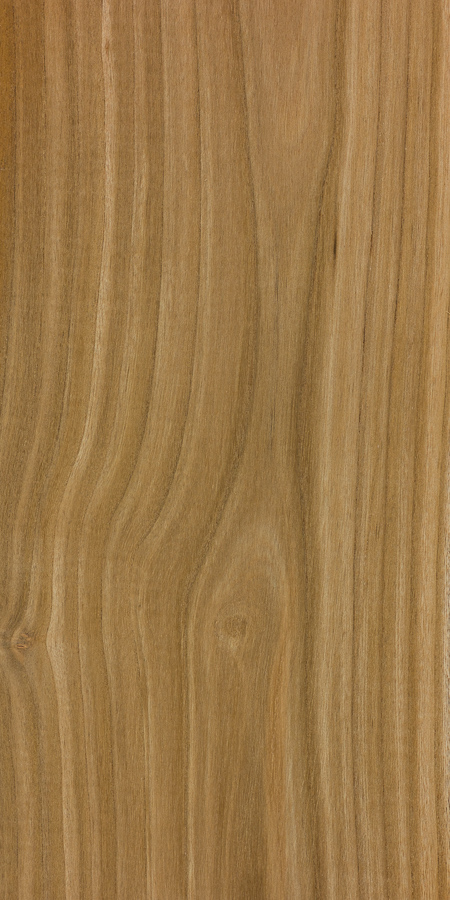
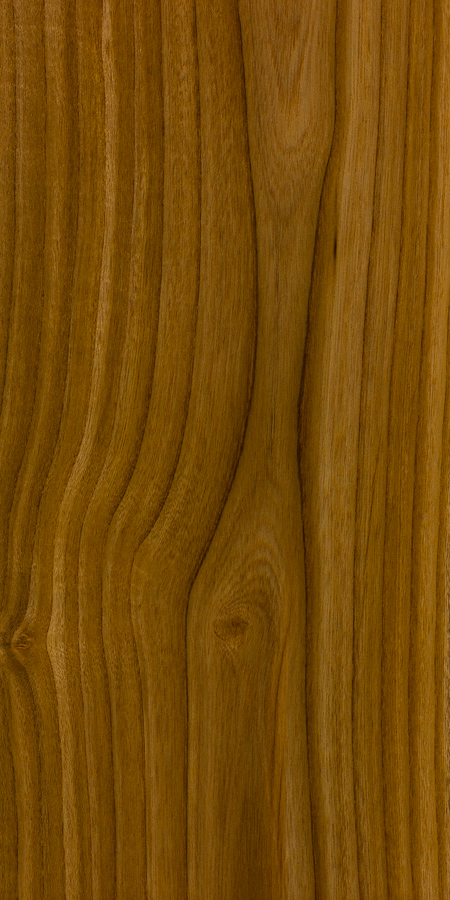
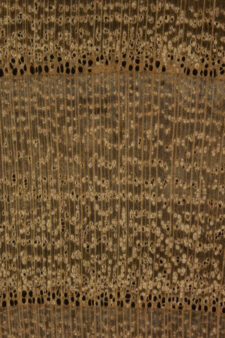

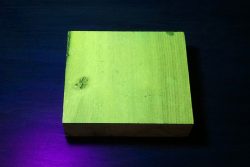
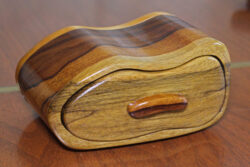





This comment left by a contributor who wished to remain anonymous: I would add that red bud can provide strong and characterful walking sticks and hiking poles, if taken from downed trees or carefully pruned from young shrubs. I have a walking stick used during gout attacks which never fails to cause envious comments:“Where DID you get that stick?” The handle was a main stem with a natural bend to the stick itself.A largish tree in an inconvenient place had to be cut down on our common ground: I heard and was able to rescue several future staffs and sticks before the contractor… Read more »
In a recent turned bowl, stunning grain with high contrast between early and late growth. Turns well after 5 months drying. Pleasant distinct fragrance of wood shavings. Attractive fine-grained burl in sapwood. Neighbor cut 14 inch dbh tree because it grew too big in front yard.
I’ve been getting trees cut for a few months, hoping itll resume one the skidder driver can trust the ground, since there was a lot if rain a short while ago. I’gotten cedar logs in plenty, so I can now plan on getting a bunch of cedar lumber as well as other woods, oaks, hickory, sassafras, stuff like that. However, I’ve been wondering if the wood of redbud could to worked om into somethig nice and useful, and the skidder guy knocked over some nice prospects, one even being thick enough to be a mantle. Have any of you guys… Read more »
Max, I am working with a nice piece of red bud from Ohio that I purchased from Klingspor. The grain is beautiful and the core hardness is a bit softer than oak. The piece is 34 inches long and 16 inches wide. I used a drum sander to get the artistic warps out of the piece after about a year of in-home drying. I hope to include this piece in a river-resin coffee table.
I had some smaller pieces left over from a stump-clearing job I did about 6 mos ago. I cut one piece apart but my table saw kind of ‘burned’ it’s way through it (blade needed replacing) Inside, it looked a lot like a small rosewood variant. I made a couple small slabs of it and cut/sanded out some grips for my 1911 pistol. It’s a bit of a ‘greasy’ wood so I think stains and coatings won’t work well. I did mine with a simple oil finish. Boiled linseed and a good rub down then finish with a paste wax.… Read more »
I have been working with wood for many years, turning wood, carving wood as well as boatbuilding and small project crafting. i am always looking for weird, castoff pieces of wood for turning. There is a certain anticipation as a turning takes shape and the grain becomes prominent. I trimmed a limb from a rather large Redbud in my backyard and wrapped it in plastic to prepare for woodturning. When the wood was fresh cut, it was greenish in color, which really surprised me. I split the piece in half to create a bookmatched pair of turnings. The color was… Read more »
(Old post, I know… but not much info on redbud wood on the web.)
How was redbud to work with? Any peculiarities with it? I have redbud wood I’ve been drying from a tree I cut down, and want to work on some projects.
Is your wood project still beige? The color of the redbud I have looks similar to a darker mahogany, as it has aged.
I read in one of the comments that leaves on this tree appear before flowers in the UK.The example in my garden (Seaford East Sussex) follows the Med type by flowering before leaves appear and has done so for 20 to 30 years.I,m sure it cannot be the only one that does in the UK